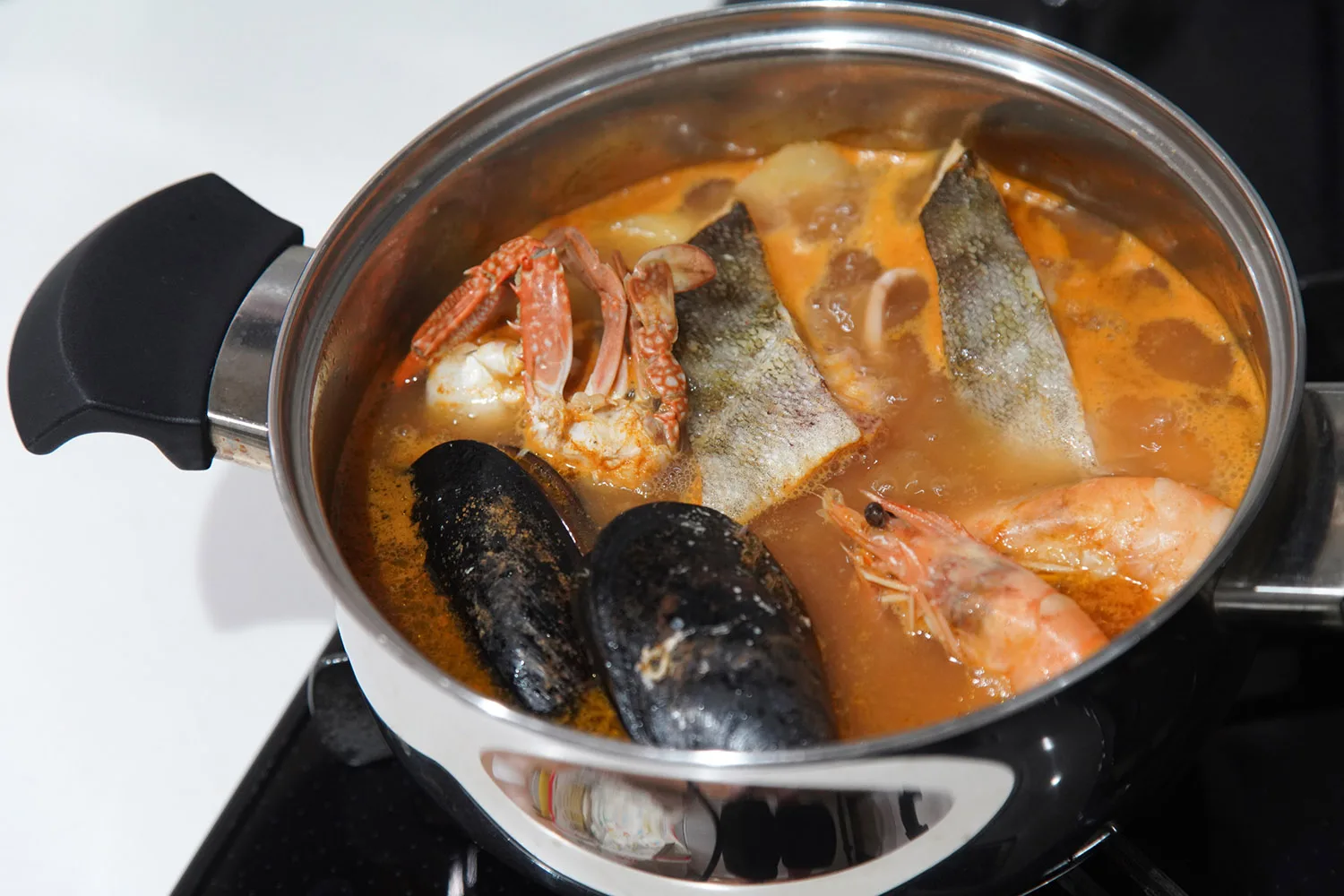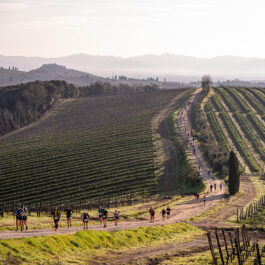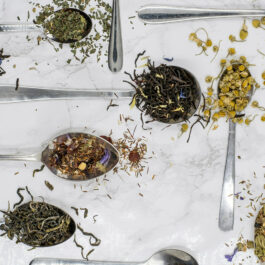Hearty, spicy and perfect for a lazy afternoon in Provence, bouillabaisse is a classic soup dish made with broth sieved and strained from the small rockfish caught along the coastal inlets of southern France.
“Bouillabaisse is really representative of the local fish here,” says Marseille-born chef Gérald Passedat, who holds three Michelin stars and whose parents and grandparents were also restaurateurs. “The fishermen use all the small local rockfish that are very prominent in the region.”
The word “bouillabaisse” comes from the Provençal term boui abaissa, which, roughly translated, means “when it boils, we lower the temperature”. This corresponds to one of many legends about the origins of the iconic dish: one day long ago, a fisherman boiled the water for his soup and lowered the temperature once the fish went into the pot. Some say it was invented by fishmongers to use what they hadn’t sold that day, while others insist that it began as a modest meal made by sailors from leftover fish scraps. Still others hold that the soup dates back to the Greeks and Romans in Marseille, who had their own version of fish stew.
Passedat likes to believe an alternate myth, based on a deformation of a word: “It could have come from a Marseillais abbot who recuperated a batch of discarded fish, put it in his old pot and prepared a soup – and the broth of the abbot, became, little by little, bouille l’abesse (“boil abbess”).

The Tradition
“Bouillabaisse is still very popular,” Passedat says. “If you’re near the beach on a Sunday, you’ll often see families fishing with a longline so they can bring back their miraculous little catch, still alive, to make a good broth, which can be very clear or very thick, like the recipes our grandmothers used.”
Certain versions of bouillabaisse are also accompanied by a mayonnaise-based sauce, called la rouille – made from olive oil, garlic, saffron and cayenne pepper or hot smoked paprika – which you spoon onto croutons rubbed with garlic and then gradually place in your soup.
The Fish
To be an authentic bouillabaisse, your soup must feature a minimum of four kinds of fish, along with numerous possibilities of seafood that you might decide to throw in, depending on what’s available in your region. The list includes crab, scorpion fish, wrasse, weever fish, moray eel and capon (red scorpion fish), all easily found in Mediterranean ports; others, such as John Dory, conger eel, red mullet, monkfish, sea bass, gilt-head bream and gurnard, are sold in many coastal regions throughout France. In terms of shellfish, look for sea urchins, lobster, slipper lobster, mussels, spider crabs, sea cicadas, velvet crabs, langoustine, and octopus.
In 1980, a scandal erupted in Marseille when certain restaurants were apparently fleecing tourists with a cheaper version of the soup. Soon after, an official charter was drawn up by the city, listing the basic ingredients the dish must contain to be sold as bouillabaisse.
View this post on Instagram
View this post on Instagram
The Spices
The most important ingredient for flavour is indisputably saffron. “Marseille was the first port in Europe to receive saffron,” says Passedat, “which ties in with the long tradition of this dish.” Garlic cloves and a bouquet garni (parsley, thyme and a bay leaf tied with a string) are essential; some drizzle a few drops of olive oil into the broth, plus a zest of orange to add a bright note to the flavour.
The Method
A quick and easy recipe bouillabaisse is not, but the result is well worth the time spent shopping for all your ingredients and preparing the dish. Ask your fishmonger to scale and fillet the fish; the head and bones can be put aside for stock. The vegetable broth – a combination of fennel, shallots, tomatoes, potatoes and carrots, lightly sautéed in olive oil – is the base.
“You can substitute certain things according to what’s available – like little crushed crabs to balance the ‘rock’ taste,” Passedat advises. “You can also use red snapper from the Atlantic for the Mediterranean gurnard. As for the cigales de mer, a kind of spider crab or sea cicada, you can replace them with more lobster.”
The Haute Variations
Gérald Passedat, who spent his childhood swimming in the sea and fishing on the rocks, serves an ultra-refined version of bouillabaisse at his Michelin three-star gastronomic haunt in Marseille, Le Petit Nice, housed in a 1900s villa hidden away on a little road that leads to the sparkling Mediterranean. It’s a multi-course affair – and the ultimate bouillabaisse experience.
View this post on Instagram
View this post on Instagram
“My approach is like a voyage under the sea, level by level, going deeper and deeper underwater to arrive gradually at the main dish,” the chef says. “You start with a carpaccio of shellfish in a clear broth, followed by variations with potatoes and a few vegetables, all the way to the final plate – a meal in itself – with all the fish who live at the bottom of the sea.
The exquisitely prepared dishes are nothing short of elaborate, but Passedat prefers to describe his cooking as a “cuisine of the essential, using the modest resources of my territory.”
A simpler, more affordable version of Passedat’s iconic fish soup is on the menu at Le Môle Passedat on the top floor of Marseille’s Museum of European and Mediterranean Civilisations (MUCEM).
Here’s the chef’s version of his beloved dish, in a less complex, make-at-home recipe.
Classic Bouillabaisse
Recipe by Chef Gérald Passedat
Serves 4
Preparation time: 60 minutes
Cooking time : 30 minutes
Difficulty: High
Cost: High

[Photo: yamasan/iStock]
Ingredients:
300 g European conger
300 g John Dory fish
300 g scorpion fish
300 g roucou (Mediterranean rockfish)
300 g weeverfish
300 g gurnard
300 g monkfish
1 small lobster
4 small spider crabs
2 potatoes
1 carrot
4 garlic cloves
1 orange peel
2 large tomatoes
1 fennel
1 shallot
1 bouquet garni
Saffron pistil
Saffron powder
2 litres fish stock
1.5 litres rockfish soup
500ml olive oil
salt and pepper
Recipe:
Have your fishmonger scale and gut the fish. Split spider crabs and lobster in half.
Prepare the stock: Wash and peel potatoes, carrots, fennel and shallots. Crush tomatoes with a knife. In a large, wide sauté pan, drizzle olive oil over the shallots, carrots and potatoes and brown gently. Add the garlic cloves, bouquet garni, crushed tomatoes, fennel and pre-bought fish stock. Bring to a boil, skim and add the saffron powder. Season and add a dash of olive oil. Then add the orange zest. Simmer for 5 to 8 minutes. Taste.
Then add the firm-fleshed fish (conger, scorpion fish, weeverfish) at a simmer. Bring to the boil and let stand for 3 minutes.
Then add the other fish, monkfish, gurnard, John Dory and roucou. Let stand for two minutes.
Finally, add the shellfish without boiling, and leave to stand for 5 minutes.
Meanwhile, heat the ready-made fish soup: Carefully remove the fish and arrange on the plate, add the saffron pistils and generously pour over the fish soup.
Chef’s Tips: The fish stock can be served with the bouillabaisse, or kept for another use; it can also be used to ‘stretch’ fish soup. The richness of your bouillabaisse lies in the quality of your rockfish and the slow cooking.
[Image at top: Vladislav Chusov/iStock]














Sorry, the comment form is closed at this time.